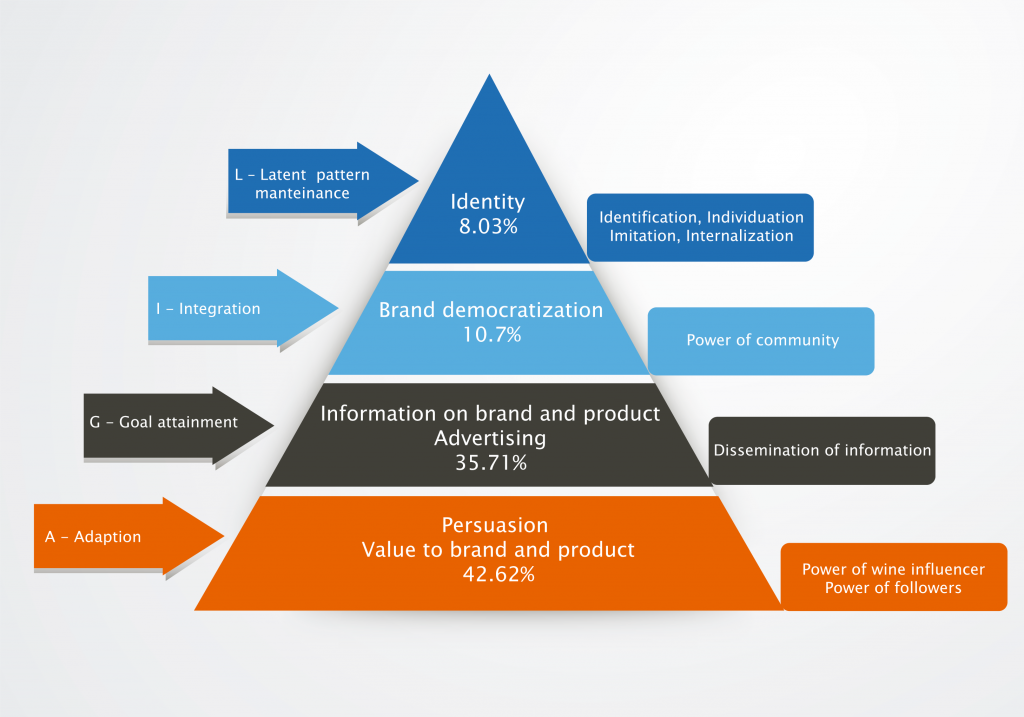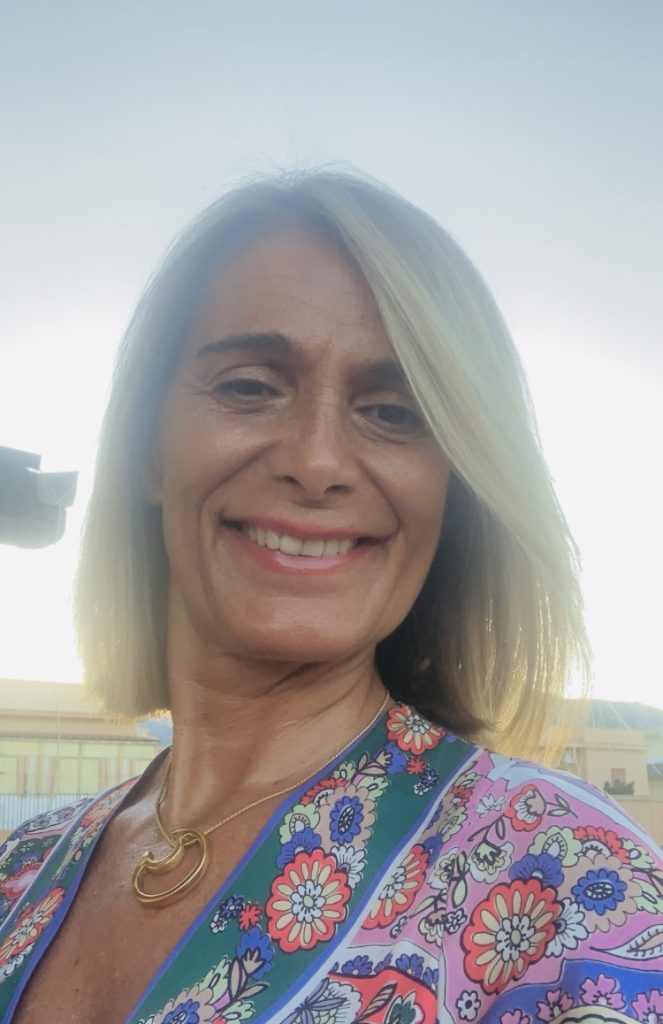By Stefania Chironi and Marzia Ingrassia
See the full paper at: https://doi.org/10.3390/joitmc6040165
Latest reports of 2020 on global overview of people use of the internet confirm that digital, mobile, and social media have become an indispensable part of everyday life for people all over the world. Nearly 60 percent of the world’s population is already online, and the latest trends suggest that more than half of the world’s total population will use social media by the middle of this year.
Internet and social networks offer a great opportunity for marketers to know consumers’ needs thanks to the large amount of information that the web contains [1]. Currently, social networks represent a virtual space where users can create and share multimedia content and interact with other users interested in the same topics [2]. Thanks to their wide diffusion, social networks can create a leverage or barrier effect in the user when she/he receives a response to her/his comments from other members of the community; this helps to create and increase relationships and exchanges of opinion between users of the same social network [3,4].
Wine has always been considered a typical convivial product because it has the power to join people together and build relationships among the wine lovers. These typical characteristics of wine certainly facilitate its communication in the social media; in fact, contents and messages are conveyed and shared through communication tools wherein the immediacy of understanding of messages and information facilitates and speeds up the process of sharing or “not sharing” [5], which is perfect for a hedonic product like “the Wine”. In this new framework, social media represent a new channel of communication to advertise, promote and talk about wines, and wine producers are very interested in being aware of what web users say in their online conversations when they talk about wines [6,7]. Wine is traditionally defined as a “high-involvement” product, which represent the consumer’s personality, status and lifestyles. For this reason, a wine “needs to be known” before being purchased, unlike other food products such as commodities.
Wine Influencers are a new type of independent third party endorsers that are progressively establishing themselves within social networks. Wine Influencers are skillful communicators and storytellers, fully aware that connecting people, knowing their feelings, generate emotions, share beliefs and create myths are fundamental factors to involve and excite wine lovers [8,9]. Frequently, wine influencers are experts in the wine sector before being “influencers” and opinion leaders, such as wine journalists and often oenologists or sommeliers with good communication skills. They introduce consumers to a product, wine, that become a symbol of a lifestyle, a social/economic status, as it happens in the fashion sector. Thanks to the use of blogs and social networks, particularly the Instagram, wine influencers created a network of people to contact with for receiving and disseminating information. Having guessed the importance of wine influencers in the world of wine and noticed the lack of scientific studies about the characteristics of their activity and communication, we carried out a study about the wine influencers and their communication model used in the Instagram platform. Netnographic Analysis, Factor Analysis and Multidimensional AGIL methods were applied in this study [12]. Instagram was chosen for this study because among the main social networks, it allows users to share and interact visually with each other, typing their experiences in a direct, emotional and engaging way, using photos and keywords with the #Hashtags [10,11].
The Netnographic analysis highlighted five Key-findings (KF) (Figure 1) occurred in all discussions of wine influencers’ profiles, that are: Advices from the Wine Influencer and generalized reciprocity in relationships (KF1); Structural and social bonds built based on the frequency of messages from regular followers (KF2); Peer-to-peer relationship development through recommendations (KF3); Relationships of trust built through online relationships (KF4); Wine influencer’s influence on his/her followers regarding everything he/she talks and tells people about (wines, wine territories, wine brands, wine events, etc.) (KF5). These Key-findings delineates the context of communication inside the wine influencers’ Instagram profiles and their activity of communication.

The Factor Analysis discovered the main factors of their communication model, thanks to the explained variance by each extracted factor: 1. Effectiveness of suggestions and advices (19.819% of the total variance explained); 2. Effectiveness of Wine Influencers towards a wine or a brand (15.130% of t.v.e.). 3. Effectiveness of Followers (11.16% of t.v.e.); 4. Effectiveness of Community (5.865% of t.v.e.); 5. Effectiveness of Peer-to-Peer Relations (4.451% of t.v.e.). The AGIL method showed the communication dimensions of twine influencers in their Instagram profiles (Table 1).

Finally, using all findings it was designed the Communication Model of wine influencers.
The model is represented by a Pyramid (Figure 2). At the first level of this pyramid there is the main element at the base of the communicative model of wine influencers and gradually, going upwards, the different communicative dimensions are highlighted until arriving to the one less represented in the model, although it is also important.
The first level is characterized by the Persuasive dimension of communication: the ability of wine influencers to add value to a wine or a brand (which characterizes the model for 42.62% of its effectiveness). Moreover the model shows also in this dimension the Power of followers in increasing the value of a brand. The second “floor” of the pyramid is characterized by the Power of information on brand and product disseminated by wine influencers and shows how advertising made using storytelling is very effective (this element explain 35.71% of significance of this model).

The Power of Community represent the “integration” dimension of communication and shows the process of brand democratization among followers (this dimension explain 10.7% of this communication model). This dimension is characterized by comments, suggestions and advices among followers about wines, wineries and events, basing on their personal experience and appears very important nowadays. This is because of the trust that is created between members of the same community that shares values and passions; it is the evolution of word of mouth. In a broad sense, the power of the community can lead to loyalty to a product or brand. Followers feel they belong to a group of people with a similar interest: the wine. Finally, the Identity dimension highlights the feelings/relationships grown among followers, which declined in the following attributes: Identification, Individuation, Imitation, and Internalization. This dimension also expresses the customer loyalty to brands and products (8.03% of the model).
The results of this study showed that wine influencers on the Instagram manage to attract several thousand followers by sharing their posts. In this case, wine influencers can be spokespersons for some brands. They can be able to influence consumers’ purchasing decisions, and this is well seen in the discussions that have been produced by the posts [13].
Wine is an “iconic” product. The interest shown by wine lovers can allow us to compare the wine with some fashion luxury products or other types of products that represent a status symbol which are widely “communicated” by the social media influencers in the world.
The case of wine influencers is a clear example of open innovation in the field of marketing communication and their communication model deserves to be studied and understood by researchers to know the aspects to know the aspects (dimensions) in which the model is articulated. The study shows that, today, wine influencers can be a valid support for the dissemination of information about wines and companies that operates in the wine sector. Wine influencers nowadays intercepts a large and very uneven market segment, and this is an opportunity for wine producers to expand their sales and reposition their products outside the traditional channels of sales, marketing, distribution and promotion. The findings show that online discussions result in something very strong; bonds among users contribute to create a pulling effect that influences, positively or negatively, consumer-purchasing behavior.
The study showed that the wine influencers are progressively becoming a reference point for experienced and common wine lovers, especially at this time when also food products’ markets progressively moved online [14]. Therefore, wine firms that need to reposition their brand or products may identify in the activity of wine influencers new opportunities to be more competitive in the globalized market.

Stefania Chironi 
Marzia Ingrassia 
STEFANIA CHIRONI
Associate Professor at the Department of Agricultural and Forestry Sciences in the University of Palermo
Place and date of birth: Palermo, 2-11-1964
Education and Training
1989:Degree in Agriculture from the University of Palermo;
1989:Qualification as agronomist;
1989 : Study grant from the Institut Agronomique Mediterraneen CIHEAM de Montpellier (France),
1991:Two-year study grant from the Centro Nazionale della Ricerca CNR, University of Naples and University of Palermo;
1994 : Researcher at the Faculty of Agriculture at the University of Reggio Calabria, and then at the Faculty of Economics at the University of Catania;
2002:Associate Professor at the Faculty of Agriculture, University of Palermo.
Scientific activities
The research focused on various topics directed towards issues related to the economy of production and the market in some productive sectors of Mediterranean agriculture (wine economic in particular); in the area of the wine sector, she has carried out much research regarding policy in the sector, consumer attitude towards quality indications, the wine itineraries in Sicily, and the response of winery owners. Some of the results of this research have been presented in regional and international congresses.
But, is also focused, on other topics, such as policies and socio-economic aspects of agriculture; the economy and the market for organic crops; agri-environment policy and its application in rural areas The marketing and its application to agricultural products with particular reference to wine marketing.
As part of this research, presented numerous contributions at various conferences and seminars nationally and internationally.
Teaching activities
The current teaching activities in the Department of Agricultural and Forest Sciences, covers the following lessons: “Economics and Politics winemaking”, “Wine Marketing” and “Marketing for the exploitation of Sicilian wines”;
Other activities
As well as participating in numerous research projects, she has also coordinated a number of research activities
Several times, she has been a member of panels evaluating grants, research doctorates and the selection of university researchers.
Over recent years, she has attended numerous conferences, congresses and study seminars, both nationally and internationally, as a speaker presenting results:
She is a member of the Scientific Committee of the Vineyard Data Quantification Society (VDQS) and referee for the journal of Scienze e Ricerche;
She is Referee for some international scientific journals
She is a member of the following scientific institutes:
The Italian Society of Agricultural Economics (SIDEA)
The Italian Society of Agrifood Economics (SIEA)
Vineyard Data Quantification Society (VDQS).
Academy of Vine and Wine
Prizes and Awards
The scientific committee of The XV Enometrics Conference and the Vineyard Data Quantification Society awarded the prize for the Best Paper to the paper titled Study by factor analysis of motivations for tourists to travel along Sicilian wine routes and visiting cellar doors authors Stefania Chironi and Marzia Ingrassia from Università degli Studi di Palermo, which. The Scientific Committee members and the President, Prof. Marie-Claude Pichery (University of Burgundy – France) identified the prize-winning paper as making important contributions to the field of Wine Tourism. The paper was presented at the “XV Enometrics Conference”, May 2008, Coillure (France) and was published in the Acta of the Conference, https://pure.unipa.it/it/publications/study-by-factor-analysis-of-motivations-for-tourists-to-travel-al-2.
Dr. Marzia Ingrassia (Ph.D.)
Date of birth: 22/09/1975
Work address: Department of Agricultural, Food and Forest Sciences, University of Palermo, Viale delle Scienze, Edificio 4, Palermo, Italy Email: marzia.ingrassia@unipa.it
Phone: 0039 349 5739096
ORCID: http://orcid.org/0000-0002-8692-513X
Scopus Author ID: http://www.scopus.com/authid/detail.uri?authorId=56610141600
Marzia Ingrassia is Contract Professor in Statistics since 2010 at the Università degli Studi di Palermo. Since 2007 Dr. Ingrassia is Ph.D. in Economics and Agricultural Policy and she published over 40 scientific papers in international peer-reviewed Journals and Acta of Symposia. Since 2004 she is research fellow at the Department of Agricultural Food and Forest Sciences of the Università degli Studi di Palermo and she carried out studies in the fields of Agriculture Economics, Food Products Marketing and Wine Marketing, with special focus on Consumer Behavior, Consumer preferences, Sensory evaluation, Health/Nutrition/Organic, Food quality, Sustainability/Ethics, Food traceability, Marketing Strategy, Advertising/Promotion, Pricing, Development/Innovation/positioning, Channels/Supply Chain, Retailing/Private Label. She has got large experience in Focus Group, and Multivariate statistics for marketing studies (Cluster Analysis, Factor Analysis, Correspondence Analysis). Dr. Marzia Ingrassia reviewed journals’ papers on topics like Agriculture Economics and Marketing (MDPI, Elsevier, PLOS, AIMS and Taylor Francis Publishers). Moreover, as a post-Doc researcher, Dr. Marzia Ingrassia worked in several research projects on economic aspects of food products chain and she is currently developing some studies on Experiential marketing and Consumer’s preferences for food products. She joined the Editorial Board of international journals such as AIMS Agriculture and Food (AIMS Press), Journal of International Food and Agribusiness Marketing (Taylor and Francis Online) and International Journal of Agricultural Economics (Science Publishing Group). She received many academic fellowships and during these years carried out her researches and presented studies and papers at many international Congresses and Symposia.
Market and Marketing of Agro-food Products
Experiential Marketing and Sensory Marketing
Wine Market, Wine Communication and Wine Marketing;
Behavior and Preferences of Consumers of Agro-Food Products;
Behavior and preferences of Wine Consumers;
Quality and Consumer acceptance of agro-food and fresh-cut products;
Sensory analysis;
Health / Nutrition/ Organic;
Statistical surveys using multivariate statistical methods and Focus Groups for research into the market and the consumption of agro-food products and wine.
Education
1998 Master’s Degree (Master of Art) in Economics at Università degli Studi di Palermo, Italy.
2000 Master in Business Administration in “MBA” at Isida Business School, Palermo, Italy.
2003 Enabling profession as Professional Accountant in Business, Università degli Studi di Palermo, Italy.
2007 Ph.D. in Economics and Agricultural Policy at the Università degli Studi di Palermo, Italy.
2016 Master’s Degree (Master of Art) in Management of Public and Health Organizations. Specialization on “Management and e-government of public companies”. University of Rome Unitelma Sapienza, Roma, Italy.
2018 Master in Organisational and innovation strategies in the Public Administration. Pegaso University (accreditated by Accreditation Service for International Schools Colleges & Universities – ASIC)
Prizes and Awards
The scientific committee of The XV Enometrics Conference and the Vineyard Data Quantification Society awarded the prize for the Best Paper to the paper titled Study by factor analysis of motivations for tourists to travel along Sicilian wine routes and visiting cellar doors authors Marzia Ingrassia and Stefania Chironi from Università degli Studi di Palermo, which. The Scientific Committee members and the President, Prof. Marie-Claude Pichery (University of Burgundy – France) identified the prize-winning paper as making important contributions to the field of Wine Tourism. The paper was presented at the “XV Enometrics Conference”, May 2008, Coillure (France) and was published in the Acta of the Conference, https://pure.unipa.it/it/publications/study-by-factor-analysis-of-motivations-for-tourists-to-travel-al-2.
Membership of Academic Societies
International Society for Horticultural Science (ISHS);
Società Italiana di Economia Agro-alimentare (SIEA);
Società Italiana degli Economisti Agrari (SIDEA);
Vineyard Data Quantification Society (VDQS).
References
- Hudson, S.; Huang, L.; Roth, M.S.; Madden, T.J. The influence of social media interactions on consumer–brand relationships: A three-country study of brand perceptions and marketing behaviors. Int. J. Res. Mark. 2016, 33, 27–41.
- Berthon, P.R.; Pitt, L.F.; Plangger, K.; Shapiro, D. Marketing meets Web 2.0, social media, and creative consumers: Implications for international marketing strategy. Bus. Horiz. 2012, 55, 261 271.
- Zainal, N.T.A.; Harun, A.; Lily, J. Examining the mediating e_ect of attitude towards electronic words-of mouth (eWOM) on the relation between the trust in eWOM source and intention to follow eWOM among Malaysian travellers. Asia Pac. Manag. Rev. 2017, 22, 35–44.
- Starr, R.G., Jr.; Zhu, A.Q.; Frethey-Bentham, C.; Brodie, R.J. Peer-to-peer interactions in the sharing economy: Exploring the role of reciprocity within a Chinese social network. Australas. Mark. J. (AMJ) 2020, 28, 67–80.
- Saura, J.R.; Debasa, F.; Reyes-Menendez, A. Does user generated content characterize millennials’ generation behavior? Discussing the relation between sns and open innovation. J. Open Innov. Technol. Mark. Complex. 2019, 5, 96.
- Singh, T.; Veron-Jackson, L.; Cullinane, J. Blogging: A new play in your marketing game plan. Bus. Horiz. 2008, 51, 281–292.
- Pelet, J.E.; Lecat, B.; Khan, J.; Rundle-Thiele, S.; Lee, L.W.; Ellis, D.; Wolf, M.M.; Kavoura, N.; Katsoni, V.; Wegmann, A.L. Winery website loyalty: The role of sales promotion and service attributes. Int. J. Wine Bus. Res. 2018, 30, 138–152. J. Open Innov. Technol. Mark. Complex. 2020, 6, 165 28 of 30
- Altamore, L.; Ingrassia, M.; Columba, P.; Chironi, S.; Bacarella, S. Italian Consumers’ Preferences for Pasta and Consumption Trends: Tradition or Innovation? J. Int. Food Agribus. Mark. 2019, 32, 337–360.
- Lee, J.E.; Watkins, B. YouTube vloggers’ influence on consumer luxury brand perceptions and intentions. J. Bus. Res. 2016, 69, 5753–5760.
- Hellsten, I.; Leydesdor_, L. Automated analysis of actor–topic networks on twitter: New approaches to the analysis of socio-semantic networks. J. Assoc. Inf. Sci. Technol. 2020, 71, 3–15.
- Schouten, A.P.; Janssen, L.; Verspaget, M. Celebrity vs. Influencer endorsements in advertising: The role of identification, credibility, and Product-Endorser fit. Int. J. Advert. 2020, 39, 258–281.
- Chironi, S.; Altamore, L.; Columba, P.; Bacarella, S.; Ingrassia, M. Study of wine producers’ marketing communication in extreme territories—Application of the AGIL scheme to wineries’ website features. Agronomy 2020, 10, 721.
- Leydesdor, L.; Welbers, K. The semantic mapping of words and co-words in contexts. J. Informetr. 2011, 5, 469–475.
- Chesbrough, H.; Crowther, A.K. Beyond high tech: Early adopters of open innovation in other industries. R D Manag. 2006, 36, 229–236


[…] Science & Wine: The Wine Influencers: Exploring a New Communication Model of Open Innovation on … […]